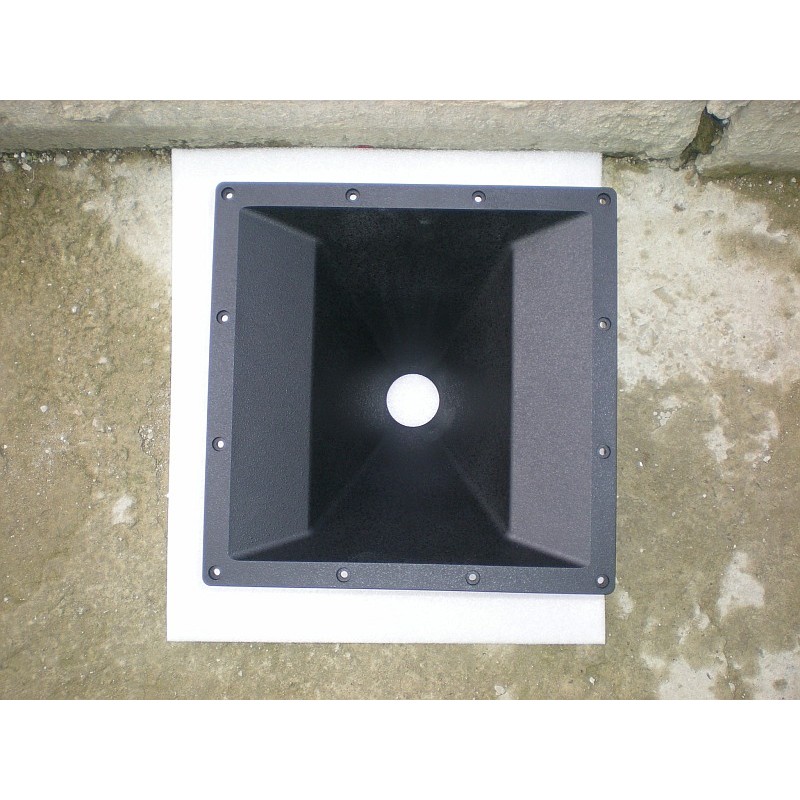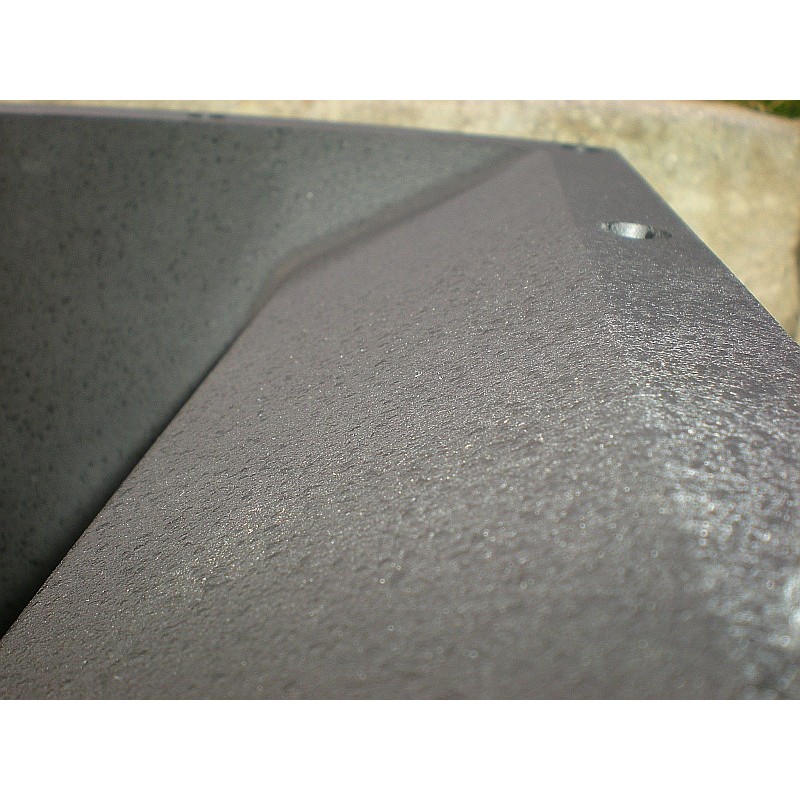remember, djk was into pa.
Some horns he really liked, I found objectionable for re-production.
Hp640 was one of the worst of his that I tried.
I'm sure the echoy reverb it added was fine for pa, it probably helped their voices sound better.
Some horns he really liked, I found objectionable for re-production.
Hp640 was one of the worst of his that I tried.
I'm sure the echoy reverb it added was fine for pa, it probably helped their voices sound better.
remember, djk was into pa.
Some horns he really liked, I found objectionable for re-production.
Hp640 was one of the worst of his that I tried.
And therein lies the "guff", one person likes, another don't! It seems to me an inappropriate implementation is the culprit. I use the 2380A, or more correct, the Selenium version. There's no Donald Duck😉 echo or other strange descriptions going on as far as I can tell. Speech intelligibility is excellent in my "hard" room...
And that's just another opinion🙂
I have a question....there were some comments made about the potential of the axi2050 based on the PWT measurements....can someone please help educate me on how those determinations are made? I'm looking at the PWT measurements of the 2451 and wondering what is possible. Since I own the driver and a horn youd think I'd take some measurements....I haven't had the time to make a spacer to account for the odd ball mounting hole spacing of the 2451.
My guess is that Plane-Wave Terminated Tube measurements represents full loading.
I also have a pair of AXi2050, but I havent desided wich horns for them yet. I bought some cheap P.audio PH 642, just for getting some sound from the AXi'es.

Here are the in room raw response without EQ in these cheap horns.

I am not in to two-way systems, and maybe I will use this AXi2050 in a four-way setup with TAD 2001 in JMLC-2500, or Fostex T-500 on top.
Digital XO, and EQ with FIR filters.
Thanks for posting!
What's your overall impression of the Axi2050?
That horn, straight walled with 2 steps in the horizontal plane, is not too bad and doesn't produce the typical cuppy/quacky horn sound.
This is due to its smooth throat area and limited depth.
It could be improved with a mouth section that's 3-5 times bigger, which would reduce the ripple.
Earlier in this thread, a German DIY 2-way was shown with the 1", 90x40° version of the same horn.


What's your overall impression of the Axi2050?
That horn, straight walled with 2 steps in the horizontal plane, is not too bad and doesn't produce the typical cuppy/quacky horn sound.
This is due to its smooth throat area and limited depth.
It could be improved with a mouth section that's 3-5 times bigger, which would reduce the ripple.
Earlier in this thread, a German DIY 2-way was shown with the 1", 90x40° version of the same horn.


Last edited:
I have a question....there were some comments made about the potential of the axi2050 based on the PWT measurements....can someone please help educate me on how those determinations are made? I'm looking at the PWT measurements of the 2451 and wondering what is possible. Since I own the driver and a horn youd think I'd take some measurements....I haven't had the time to make a spacer to account for the odd ball mounting hole spacing of the 2451.
My guess is that Plane-Wave Terminated Tube measurements represents full loading.
camplo, you might want to check this and this thread about PWTs.
Attached is the original (1991) AES paper on the subject, also mentioned in both threads.

Attachments
Last edited:
I guess with this amount of drivers the damping material in the tube must be of the inflammable type !
Regards
Charles
Regards
Charles
Yeah, I believe this pipe was used to simulate shockwaves during rocket launches.
That bunch of early Altecs are worth a small fortune today.
That bunch of early Altecs are worth a small fortune today.
Last edited:
The Altec 288 cost $130 in 1947, which is equivalent to about $1,465 today, based on the inflation rate.
damn it... the technical math is confusing enough now we're talking about inflation rates!!!
i've tried to understand financial math for years, it seems you need to apply that movie line "never underestimate the other guy's greed!"
i've tried to understand financial math for years, it seems you need to apply that movie line "never underestimate the other guy's greed!"
In most economic disciplines there's no math involved, except for econometrics and financial mathematics.
Thanks for posting!
What's your overall impression of the Axi2050?
Well, I have a very limited experience in DIY (3 years), and have not heard many comp. drivers.
The AXi2050 have a very smooth response, and I like what I hear..a lot.
Now this is a two-way thread, and in my opinion this driver is not usable in a two-way speaker.
It really needs help at the top end.
I dont think I ever will use this over 10 khz.
I've tried it with a TAD2001 in JMLC-2500 crossed at 3 to 6 khz, and that works ok.

Later I will try with Fostex T-500, but then the AXi2050 will need a lot of EQ.
I also want to try the AXi2050 in a Yuichi A290 later.
Last edited:
Regarding the VOTT I am sure that it will not meet all the criteria of the thread title. And I assume the same accounts for the 604.
Regards
Charles
Regards
Charles
Also worth mentioning, this German 2-way project, intended to be used with subs and co-developed by diyaudio member FoLLGoTT.
Components:
- Compression Driver: BMS 4550 L 1" 16 Ohm
- Horn: Limmer 022
- Woofer: B&C 12NDL76.
FollHank
The home cinema speaker beckersounds b300 "FollHank" was developed for home theaters in normal size. Special emphasis has been placed on a linear and controlled dispersion behavior, whereby the b300 is easily able to reproduce the film and the music with reference level at the listening position in a linear and distortion-free manner. You can use the b300 as Main, Center and Surroundbox. Although it can also be used as a ceiling loudspeaker, the b200 "DeckenFollHank" is generally recommended as a ceiling loudspeaker. It should also be noted that the b300 is designed to work well with a powerful subwoofer system such as the b800 or b1000.
The b300 is a fully active controlled box and available in 2 variants:
With the b300a all the electronics are integrated in the box. Here you can feed the appropriate signal with an XLR plug (via adapter also cinch) into the box. The box is powered by a Powercon True1 connector. On request, looping through the power supply is possible.
The b300p requires an external speaker management system (DSP) and two power amp channels. We offer you for the b300p the appropriately tuned DSP power amp a300. For the Trinnov Altitude and other popular DSPs, such as the excellent devices from Xilica or the Behringer DCX2496 Ultra-Drive.
TECHNICAL SPECIFICATIONS
Dimensions: 33.5 cm x 69 cm x 21 cm
Frequency response: 80 Hz to 20 kHz
Maximum level: 120 dB at 1 meter distance
Radiating Hozizontal: 60 degrees at -3dB
Radiation behavior Vertical: 40 degrees at -3dB



Components:
- Compression Driver: BMS 4550 L 1" 16 Ohm
- Horn: Limmer 022
- Woofer: B&C 12NDL76.
FollHank
The home cinema speaker beckersounds b300 "FollHank" was developed for home theaters in normal size. Special emphasis has been placed on a linear and controlled dispersion behavior, whereby the b300 is easily able to reproduce the film and the music with reference level at the listening position in a linear and distortion-free manner. You can use the b300 as Main, Center and Surroundbox. Although it can also be used as a ceiling loudspeaker, the b200 "DeckenFollHank" is generally recommended as a ceiling loudspeaker. It should also be noted that the b300 is designed to work well with a powerful subwoofer system such as the b800 or b1000.
The b300 is a fully active controlled box and available in 2 variants:
With the b300a all the electronics are integrated in the box. Here you can feed the appropriate signal with an XLR plug (via adapter also cinch) into the box. The box is powered by a Powercon True1 connector. On request, looping through the power supply is possible.
The b300p requires an external speaker management system (DSP) and two power amp channels. We offer you for the b300p the appropriately tuned DSP power amp a300. For the Trinnov Altitude and other popular DSPs, such as the excellent devices from Xilica or the Behringer DCX2496 Ultra-Drive.
TECHNICAL SPECIFICATIONS
Dimensions: 33.5 cm x 69 cm x 21 cm
Frequency response: 80 Hz to 20 kHz
Maximum level: 120 dB at 1 meter distance
Radiating Hozizontal: 60 degrees at -3dB
Radiation behavior Vertical: 40 degrees at -3dB



Last edited:
The Altec 288 cost $130 in 1947, which is equivalent to about $1,465 today, based on the inflation rate.
FWIW, at least for the USA, this calculator is a bit more accurate [$1,551.48]: InflationData.com's Cumulative Inflation Calculator
GM
- Home
- Loudspeakers
- Multi-Way
- Is it possible to cover the whole spectrum, high SPL, low distortion with a 2-way?